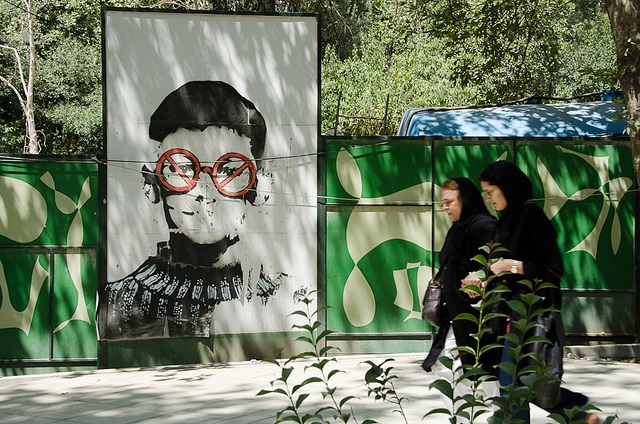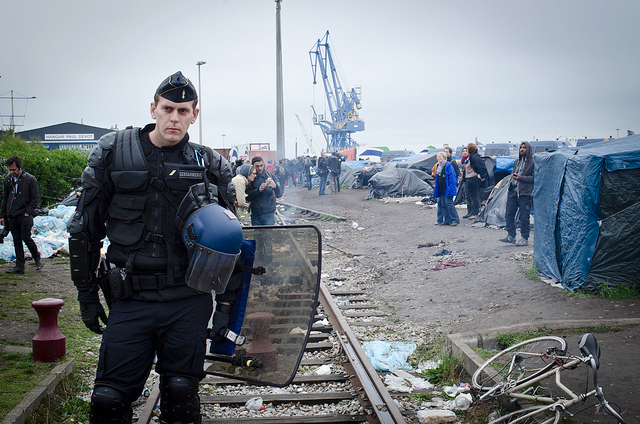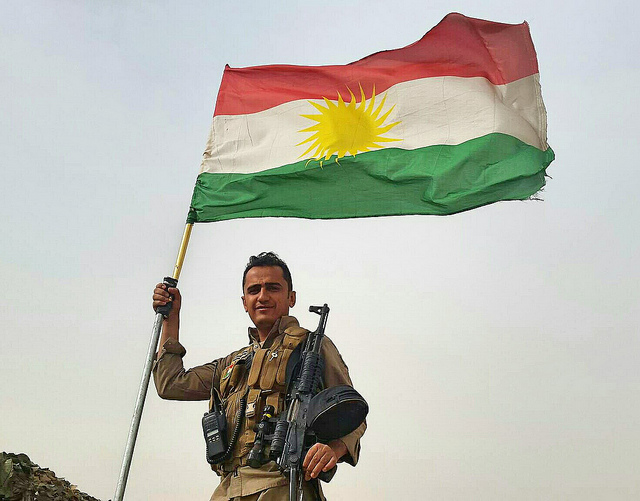In 2007, when former President Mahmoud Ahmadinejad declared during a Columbia University appearance, “In Iran we don’t have homosexuals like in your country,” many chuckled. It seemed to verify the average person’s preconceptions of the country as being primitive and socially backwards. Ahmadinejad was obviously wrong and his response spotlighted the fact that homophobia is a major issue in Iranian society. The event wasn’t meant to facilitate a productive discussion on the Islamic Republic’s many failings though, it was meant to reassure Columbia students and faculty of their own progressiveness. Ahmadinejad got a podium. The audience got a way to criticize his ideological beliefs.
Orientalist thinking like this obviously has consequences in how we discuss and view Iran. It isn’t just that we have trouble discussing the many problems that do exist in the country, such as human rights violations. We are also prevented from recognizing when Iran is doing things more or less right. Iran is actually far more progressive than many people realize on a number of issues. This is especially apparent when it comes to: organ donations, family planning, transgender surgery, drug rehabs, stem cell research, and HIV prevention.
Organ Donations
Iran is one of the few countries that permits the selling of an organ—kidneys to be precise—to another individual if they are undergoing organ failure. It wasn’t until the Iran-Iraq War that organ donations became a common procedure in the country, causing kidney transplants in particular to jump drastically, thanks to wartime and a dwindling supply of dialysis machines. Here is how it works: two non-profits regulated by the Iranian government—the Charity Foundation for Special Diseases and the Charity Association for the Support of Kidney Patients (CASKP)—implement a number of rules and regulations for the purchase and sale of organs. The charities are designed to find vendors and introduce them to recipients, checking the compatibility of a possible donation and ensuring a fair trade.
Rules–such as physicians being able to give a medical assessment of the potential surgery, without being allowed to undertake the procedure itself–go leagues in ensuring that a donation is compatible and that there is a fair trade. The government then reportedly pays a sum of about $1,200 as well as medical coverage to the donors. Through a non-profit, recipients are said to pay a few thousand dollars more. Interestingly, kidney donations themselves are banned from non-Iranian citizens, as well as international organ trading.
According to CASKP’s director Mostafa Ghassemi, “In 2010, a total of 2,285 kidney transplants took place in the country, of which 1,690 kidneys were supplied from volunteers and 595 from those clinically brain-dead.” The policy is a bit unnerving and controversial, but it has still been wildly successful. As of 1999, Iran’s kidney transplant waiting list no longer exists. As the CATO Institute points out, “if a decade’s worth of reports in the transplant literature are to be believed, only one country in the world does not suffer from an organ shortage: Iran. Although Iran clearly does not serve as a model for solving most of the world’s problems, its method for solving its organ shortage is well worth examining.”

Family Planning
While the United States begins a renewed debate on the use birth control and organizations like Planned Parenthood every so often, Iran was once known to have one of the premier family planning systems in the world. After the Iran-Iraq War came to an end in 1988, the country saw a jump in population growth that caused Ayatollah Ruhollah Khomeini to issue fatwas or religious edicts so that “contraceptives could be obtained free at government clinics, including thousands of new rural health centers.” In addition, “Health workers promoted contraception as a way to leave more time between births and help reduce maternal and child mortality. Couples intending to marry were required to receive counseling in family planning.” Iran’s family planning system was such an important step forward that it was internationally acclaimed, and the then-Minister of Health ended up receiving the 2000 United Nations Population Award.
Unfortunately, the program was scrapped in 2012 under the presidency of Mahmoud Ahmadinejad due to a high decline in birthrates. In its place, a new program was introduced to encourage families to bear more children. The program provides every newborn with a government bank account containing $950. From then on, $95 is deposited annually until he/she reaches 18 years of age. At the age of 20, the now adult is allowed to spend the money at its own discretion. Despite the rollback and obvious effort to bring about a second baby boom, most Iranians believe the new program will not deliver. Many Iranian women are more educated than the 1980s, and see no incentive in having children while living in a hyper-inflated economy. On the contrary, women have put their priorities in other places, such as their college degrees and careers, which has actually caused the age of marriage to increase. The overall demand is for a restoration, or further development, of Khomeini’s original policy, and it remains to be seen if the conservative backlash against it will survive the presidency of Hassan Rouhani.
Transgender Surgery
Interestingly enough, second to Thailand, Iran is on the forefront of transgender surgery—some say Iran may actually be leading, with about three hundred surgeries annually. This has been the case since 1985, when Ayatollah Khomeini issued a fatwa in favor of transgender people (which he first wrote of during the 1960s). Khomeini’s original fatwa has been reiterated by Iran’s current Supreme Leader Ayatollah Ali Khamenei, as well as a number of other clerics. This is despite the fact that gender issues aren’t exactly progressive overall, with homosexuality being banned and the fact that homosexuals are often pressured to ‘correct’ themselves through this surgery. According to Dr. Mehrdad Baghaei, a specialist in gender reassignment, getting the surgery is not exactly straightforward, either.
“Six psychiatrists need to examine the patient and talk with them, usually during multiple sessions, to confirm the necessity of gender change. Then, a commission of psychiatrists needs to sign off on the diagnosis of the ‘sexual disorder.’ A forensic examiner of the Iranian Legal Medicine Organization is then required to see the patient and confirm the diagnosis, at which point the Legal Medicine Organization issues a permit validating the sex-reassignment surgery.”
After the surgery, the Iranian government issues new legal documents, beginning the life of the newly transitioned citizen. The process is cumbersome, but it is similar to those seen in most countries. The real achievement is that the Iranian government would support the surgeries to the extent that it does. Iran actually goes as far as to subsidize gender reassignment surgery—paying half of the surgery’s costs, including hormones and psychological aftercare.

Drug Rehabs
According to UNODC, Iran has “one of the most serious addiction problems in the world.” In an assessment carried out by Iranian authorities in 2011, it was estimated that the country had about 1.2 million dependent drug users. To break it down, of that number, some 250,000 are said to be using intravenous drugs, while more than 20 percent are opiate users. Unfortunately, while it was noted in a 2007 assessment that opium use was on the decline, amphetamines and heroin were said to be on the rise. Today, the number of drug users in Iran has now reportedly reached 3 million, according to the country’s Drug Control Headquarters.
This has framed new legislation on the matter. Prior to 2010, drug addicts were treated as criminals, but under new policies, addiction is no longer seen as a crime. It’s the non-addict “traffickers” that possess the drugs who are seen as criminal. Iran is said to be a leader in the field of opium substitution therapies, with some 3,300 clinics providing methadone maintenance treatments (MMT) to addicts. According to an assessment by the Drug Control Headquarters in December 2013, over 600 rehabs have been founded across the country, mostly on the outskirts of major cities. Many are government-run rehabilitation, social support, and treatment centers, but there are also many that are run by NGOs or the private sector, licensed under the State Welfare Organization of Iran. Iranians also benefit from drop-in centers, outreach programs, as well as other programs.
Private clinics have also been set up, taking things a step further to treat the physical and psychological effects of addiction. Family-centered medical treatment is pursued with the help of an expert, and institutes like the Ayandeh Clinic reportedly take between 150 and 200 referrals a month. In an effort to reduce expenses, the clinic also offers both online and over-the-phone consultation. Its exact techniques are reminiscent of Narcotics Anonymous programs, and attempt to help integrate Iranians back to society. There has also been massive progress on treating drug addiction among women. The Drug Control Headquarters states that over 700,000 women are drug addicts in Iran, a number that has doubled in the past two years, putting the number of female addicts at 10 percent of the overall afflicted population. The Washington Post noted recently that women-only rehab centers are being rolled out, and that they are “one sign that attitudes are slowly changing as Iran begins to confront an uncomfortable problem that long went ignored.”
On similar, and quite surprising grounds, in September 2013, the Iranian government produced a “pilot permit” for an alcohol rehabilitation center in Tehran that would be the Islamic Republic’s first. As Al-Monitor explains, “The critical prerequisite of establishing an alcohol rehabilitation center was in seeking the clerics’ blessing. While alcohol consumption is forbidden in Islam, there apparently is no fatwa regarding treatment for alcohol addiction. Iranian government officials were prompted to spring into action to get a religious permission for such treatment. The administration is now approaching the matter from a technical aspect, saying that ‘addiction is an illness, not a felony.’” The process is important because it indicates an important theme: there appears to be little boundary getting progressive things done with Iran, so long as it is religiously articulated and supported by a cleric.

Stem Cell Research
It is often assumed that embryonic stem cell research would be a touchy subject in Iran because of the religious issues it brings up in the United States, however, this isn’t true. Since 2002, the Supreme Leader issued a fatwa in favor of stem cells, putting Iran on the forefront of research. This is possible because according to the national clergy, life is defined as “beginning three months after conception, which gives scientists access to human embryonic stem cells left over from fertilization trials.” The first-trimester guideline is based on Hadith. Today, Iran ranks as one of the top ten countries in the world that cultures, produces, and freezes human embryonic stem cells to formulate new tissues and find cures to diseases.
Much of the country’s research is being conducted at the Royan Institute, which was initially established as an infertility clinic in 1991. Royan’s existence has never been surprising: journalist Azadeh Moaveni claims that Iran is the “fertility treatment capital of the Muslim Middle East” for in vitro fertilization, boasting more than seventy such clinics. Since 1998 though, Royan has expanded into a stem cell research center approved by the Ministry of Health. It now focuses on andrology, embryology, epidemiology, genetics, and gynecology, as well as stem cells. Getting down into the nitty-gritty, it describes stem cells as “providing a comprehensive and coordinated ‘bench to bedside’ approach to regenerative medicine, as well as a greater understanding of fundamental biology of stem cells, developmental biology, tissue engineering programs, development of translational research of stem cell therapeutics, and administration of new cell-therapy approaches that can restore tissue function to patients.” Hardly Islamist opposition to research science, with forty-six scientists and 186 lab technicians.
HIV Prevention
Although there continues to be a stigma surrounding HIV/AIDs in Iran, “the nation’s health authorities are winning praise globally for their response to the disease.” Iran is said to have 421 centers throughout the country that not only provide voluntary counseling and testing, but free condoms, sterile needles and syringes to drug users, and even treatment for those infected. By the end of 2013, some 3,500 Iranians were receiving treatment for the virus, ten times the number in 2005. Prisons also provide HIV prevention and treatment through the distribution of condoms and syringes, since unsafe sex, tattooing, as well as drug use remain prevalent in Iranian jails. The scale of the problem is such that Iranian policy on drugs is simultaneously an attack on the HIV problem, since not surprisingly, many HIV-positive patients got the disease from intravenous drugs. According to UNODC, between March 1989 and 2013, about 68.6 percent of the 26,125 registered HIV-positive patients were drug users. This is only a portion of the 80 000 HIV cases that are claimed by the Ministry of Health, Treatment, and Medical Education (others say the number is closer to 100 000.)
Progress is headed in the right direction. Successful drug policy helps, but there are other positives. There are currently 14 HIV-positive clubs that help provide psychological and social support to those infected with the virus, as well as their families. In 2006 alone, the Iranian government reportedly put $30 million into AIDs awareness, which included the postal service incorporating a stamp with the red ribbon in solidarity with the international awareness initiative. Health Minister Hassan Hashemi is seeking to expand these results further, since HIV infections are still rising in Iran. Last December, at a World AIDS Day event in Tehran, he pledged to tackle “misinformation and unscientific claims” that are preserving the disease as a taboo.
Iran clearly has a long way to go. It may never be seen as entirely progressive either, especially since it has to balance Islamic and national considerations when passing such policies. However, in comparison to its Middle Eastern neighbors, it is doing quite well on many topics. HIV is barely discussed in the Gulf monarchies, for instance, and transgenderism is completely underground in countries like Egypt and Jordan. Iran has a lot more going for it than is initially thought. When we discuss the country, it is therefore best to evaluate it on its own merits, and be surprised by what we find.
Photographs courtesy of Kamyar Adl, Ali Nasery, Lou Gold and M Rasoulov. Published under a Creative Commons License.






1 comment